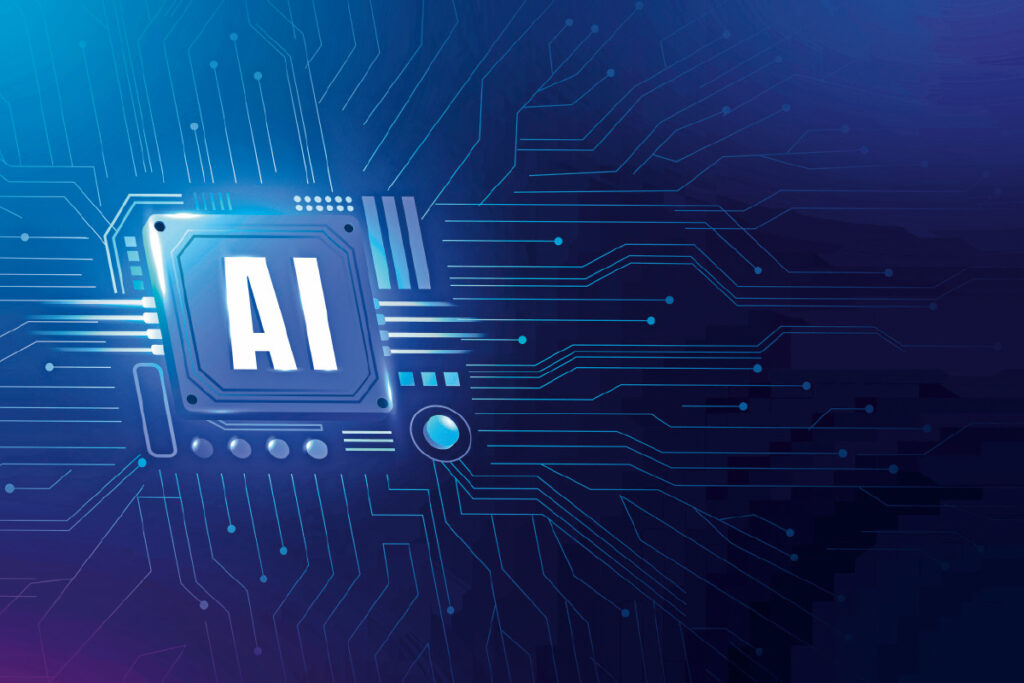Fear not the rise of the machine. Artificial Intelligence and Machine Learning promise to reshape humankind’s future in ways scarcely imaginable before
Words by Beenu Arora
If one were to look back at the first half of the 20th century, the concept of Artificial Intelligence (AI) captured the imagination of science fiction fans far more than it did for the general public. Be it in literature or cinema, androids, sentient machines, killer robots, and other forms of AI sat at the centre of many of science fiction’s high watermarks — from 2001: A Space Odyssey, to Terminator, I, Robot and so much more. It is only in the second half of the last century that scientists and technologists have made serious inroads into realising the full potential of AI.
A transformation in the making

Looking at the direction we’re heading in, the next five years promise to bring significant changes to the cybersecurity industry. One of the main reasons for this transformation is the advancements in Machine Learning (ML) and AI.
In the upcoming years, machines that can think, learn, and make decisions on their own will become central to how businesses handle online dangers. AI’s ability to quickly collect, analyse, and act on threats will outpace human capabilities, providing a faster and more efficient response.
These advanced systems are incredibly adept at examining vast amounts of information in record time. Whether it’s data from regular internet use or from the hidden corners of the internet, like the dark web, they can spot patterns and irregularities that might hint at a security risk. This ability to rapidly identify potential problems will become invaluable as threats become more complex and elusive.
By entrusting these data-heavy tasks to machines, our cybersecurity experts will have the freedom to focus on more overarching tasks. Instead of getting caught up in the nitty-gritty of data analysis, they can concentrate on creating broader security strategies, actively searching for new threats, and designing specific defence methods against possible attacks. This not only makes their jobs more strategic but also more effective.
The industry’s shift from a mainly reactive stance (dealing with threats as they arise) to a proactive one (anticipating and preventing threats) will revolutionise how companies protect themselves online.
And as AI becomes a bigger part of threat management, it’s safe to predict that the roles and responsibilities of those working at the Security Operations Center (SOC) will undergo some changes, offering new opportunities and challenges for the team. Instead of being bogged down by routine and repetitive tasks, these professionals can now focus their expertise on more pressing challenges. They can dive deep into intricate threats, coordinate timely incident responses, and collaborate effectively with other specialized teams. While AI systems operate autonomously, they aren’t entirely independent. The role of analysts remains crucial in guiding these systems, ensuring their actions resonate with the broader security objectives of the organization.
AI: a key lynchpin

AI is increasingly becoming a cornerstone for cyber threat detection, and its adoption is primarily driven by a set of unique capabilities that this technology brings to the table.
One of the most prominent features of AI is its unparalleled prowess in information processing and automated threat detection. The vast digital world generates immense data, from intricate system logs to the nuanced behaviour patterns of users. AI, with its advanced algorithms, seamlessly sifts through this data, identifying patterns that might escape the human eye. Any deviation or anomaly in these patterns can be an early indicator of a potential threat. By flagging these irregularities, AI-driven systems provide a first line of defence, acting as vigilant sentinels in the complex landscape of cybersecurity.
In addition to this, AI brings to the forefront an advanced approach known as behavioural analytics. By consistently monitoring and learning from data, AI establishes a norm or a baseline pattern of behaviour for users and systems alike. Any divergence from this baseline is immediately recognized, facilitating swift action and proactive risk mitigation. Whether it’s for individual users, larger organizations, or even broader entities, this ability of AI to preemptively identify risks is transformative. What’s even more remarkable is AI’s capacity to evolve. As it encounters new datasets and fresh challenges, it adapts and refines its algorithms, ensuring that its threat detection mechanisms become sharper and more accurate with each passing day.
In essence, AI’s integration into cyber threat detection isn’t just an incremental upgrade; it’s a game-changer, reshaping how organizations approach, understand, and tackle cybersecurity challenges.
The need for threat intelligence
In today’s dynamic digital landscape, traditional methods of preventing unauthorized access fall short. There’s an undeniable need for a deeper, more proactive understanding of cyber threats, often termed threat intelligence. This understanding is pivotal in not just reacting to threats but anticipating and countering them before they manifest.
However, the rapidly advancing sophistication of cyber threats demands an equally agile response. This is where AI seamlessly fits in. AI’s predictive analysis offers an unparalleled ability to foresee potential threats by discerning patterns in vast historical data. Moreover, its innate capacity to swiftly process enormous amounts of data means it can detect anomalies that might elude human analysts, ensuring timely intervention and threat mitigation.
When combined with behavioural analytics, AI can determine normal digital behaviours and identify any subtle deviations that might indicate underlying threats. Beyond this, the prowess of AI in Natural Language Processing allows it to interpret vast troves of unstructured data sources, like social media, further broadening the scope and depth of threat detection. This AI-driven approach not only promotes a more efficient sharing of threat intelligence among organizations but also ensures threat hunting becomes a streamlined and more focused endeavour.
In essence, as the cyber threat landscape continues to evolve, integrating AI-driven threat intelligence isn’t just an advantage—it’s imperative to ensure cybersecurity remains both proactive and robust in the face of emerging challenges.
By intertwining their strategies with AI, organizations are not just enhancing productivity but are fortifying their cybersecurity foundations. This strategic positioning ensures that they are well-equipped to face the evolving challenges posed by cyber adversaries.
Beenu Arora is CEO and Co-founder of Cyble, a prominent global threat intelligence SaaS provider.
Over a career spanning 15+ years, Beenu boasts a wealth of knowledge and expertise as a Senior Technology Strategist and Cybersecurity expert, and has garnered extensive international and cross-functional experience, thriving in solving complex security challenges that encompass technology, risk consulting, and digital transformation initiatives.


